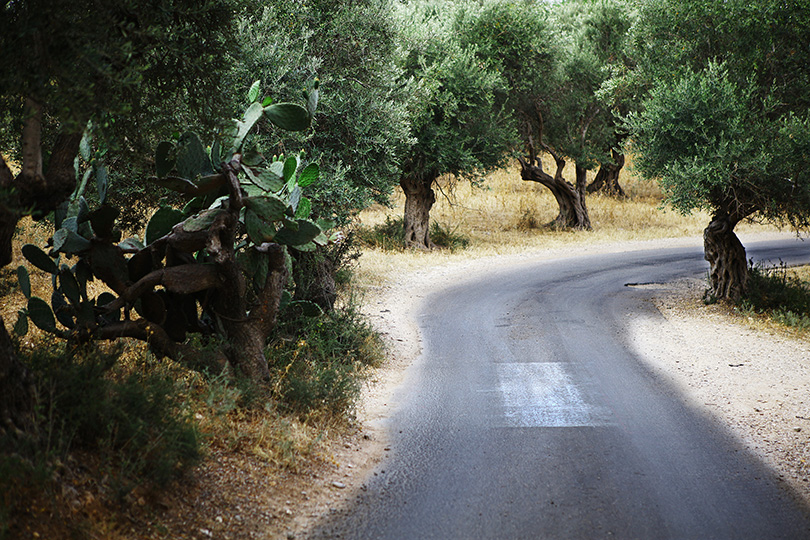1948
“Borders”, which I created over a two year period (2012-2014) in Israel, examines man’s definition of his immediate geographical surroundings, as well as his sense of belonging to it and his impact on it. The work explores disputed territory, the area between the purple and green lines designating the 1948 and 1967 armistices, respectively. My work expresses the conflict that exists between my personal perception of space as a continuous and complete entity formed by the terrain itself, and the prevailing conception of physical space as one which must be defined and demarcated.
I am most interested in the art of printing. Printing is an artistic challenge that integrates various technically processes in order to make a thought into reality. Despite the great importance of technique, a printed creation must first of all start with the formulation of an idea. I am interested in the stamping of the printed substrate which, as the conclusion of positive and negative processes, creates a connection with the original substrate. I decided to rely on traditional printmaking tools and tried to print outside the space of the printing and press workshop, which limits the reproduction size and format. By combining the use of rolling paint for the physical printing on the substrate and the frottage method, I printed on asphalt roads specifically located in areas which were included as part of Israeli territory following the wars in 1948 and 1967.
The aim of the work is to discuss and raise questions about concerns related to borders as a geographic factor grafted by man into the natural spaces in which he lives and works. Moreover, this is one of the important and prominent phenomena in the cultural landscape which man has created on the earth’s surface, and which imprints its mark on the way he lives. I also intend to assert that the concept of place, which I argue is the ultimate ruler in our world, would want to remain “free” from geographical delineation and cartographic characterization.
I presented the specific geographical location on which I printed (based on post-1948 and post-1967 borders) as an installation inside a circular aluminum construction with a narrow opening, which enabled the observer to enter it as it floated in the air and was suspended from the ceiling. The purpose of allowing for such movement in this simplified space – between two wars and two borders – was to create a new type of space, raising questions related to the realities inherent in closing off spaces and demarcating borders. These two elements – simplicity and detachment – are essential for man to re-question and re-think his view on place, space and borders. It was thus through the usage of these elements that I intended to re-raise the question of the space and place in which we live, and re-examine our understanding of the definition of borders and man’s need for them. The question of “place” continues to engage me because it integrates within it qualitative questions about environment, identity, cultures, time and man.
